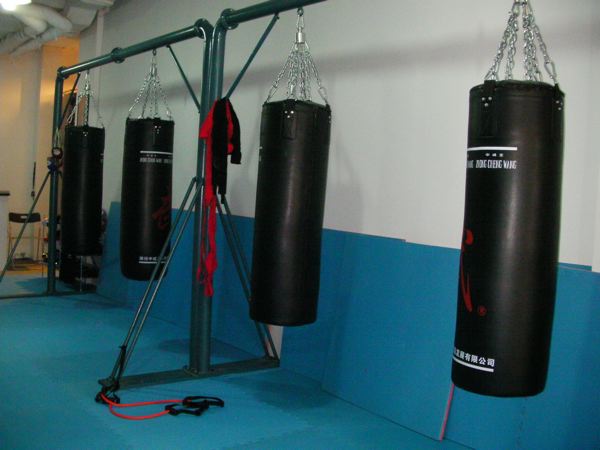After being unsatisfied with teaching some very traditional fighting technique again, I decided to make an experiment and dedicate part of the next three training sessions to the most ancient art of unarmed fighting: the traditional cavemen-style (for those, who don’t know it, it’s like crazy monkey kung fu, just without the kung fu). The results were quite interesting, but let’s start from the beginning.
I started the experiment with 5 participants of different stages of fitness and martial arts experience:
- 1 young woman with 2 month of martial arts training and very good fitness level
- 1 young woman with 5 month of martial arts training and mediocre fitness level
- 1 older woman with 6 years of martial arts training and very low fitness (and health) level
- 1 mediocre aged man with 6 years of martial arts training and good fitness level
- 1 mediocre aged woman with 30 years of martial arts training and mediocre fitness level
With Bruce Siddle’s (Sharpening the Warrior’s Edge) recommendations for teaching survival skills in Mind I tried to…
- let Students learn basic components within three minutes
- let Students see Technique work
- let Students experience the technique personally in the first training session
The recommendation to let Students have a positive field experience would come in the last training session.
I introduced the flailing forearm strike in our first training session, which lasted about 15 minutes. During this time we handled the basic understanding and the power generation. Training the technique first in slow motion with a partner and after that with full power and speed on a kicking shield, I expected us to need at least 20 minutes to half an hour for the beginners to learn and understand. I also expected the more experienced participants to overcomplicate things. I underestimated both (the old stagers thought it through afterward, but it worked without thinking anyway). We even added some „extras“ like using the same motion for a hammerfist strike at slightly longer range and everybody was happy.
The results of the first training session:
- the two young women at least tripled their power and speed
- the older woman at least doubled her power
- the man (who already did hit hard) doubled speed
- the last woman (who already was fast) doubled speed and power
So far a impressing result for the first 15 minutes. Let’s see what comes next…
In the second training session we started with a brief revision of the basic technique, followed by some work at the dummy. We talked about targeting and then everybody got a chance to try his skills with full power and speed versus an human looking target.
The results of the second training session:
- the two young women were surprised by the pain they experienced when hitting the dummy but got over it with the second round
- two of the women had glitches when striking an human looking target. This mixed up their targeting: they didn’t dare to strike to the neck or head
So we have speed and power combined with some good targeting and found some glitches. For all of this we needed about 30 minutes.
In the third training session we started with a revision of the basics again and then introduced some dynamic stress test. Our “bad guy“ in heavy torso and head armor (with additional earplugs) would grab a participant from behind, trying a kidnapping or beatdown. Once the participant turned with a sweeping forearm strike the “bad guy“ kept this drill fast moving with a lot of forward pressure.
The results of the third training session:
- every participant did hit even faster and more powerful, even when moving backward
- only one of the women still showed the glitch not to hit the head or neck
So after 30 more minutes we erased one glitch, let students have a positive „field experience“ and enhanced power and speed even more.
To get these results in 75 minutes of training a traditional technique (by which method ever) seems hard. Since our short experiment, we included an additional drill to our regular training, combining progressive boundary setting with our “new technique“. I walk toward my students holding a big kicking shield. When I get too near, they raise their “visual fence“ with a verbal “no“. When I advance further I get a second “NO“, and when I touch the “visual fence“ with the kicking shield they explode and push me once through the room with their forearm strikes. And they still get faster…
